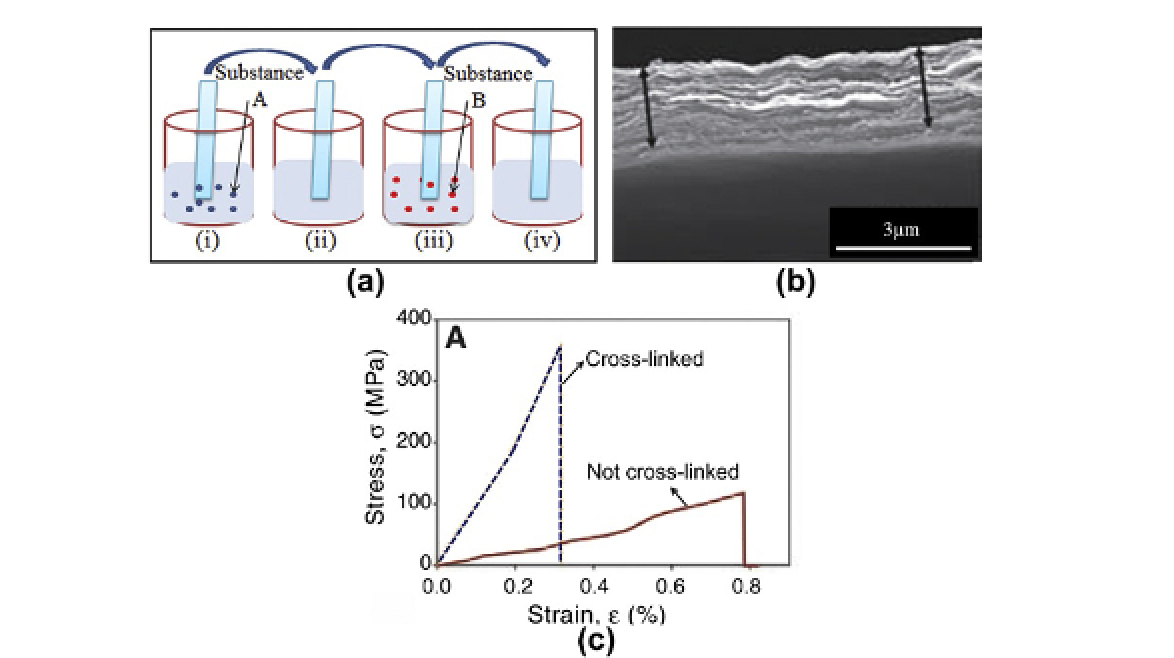Biomedical Engineering Reference
In-Depth Information
FIGURE 3.10
(a) The process plan for LBL assembly consists of sequential (i) dipping in substance A, (ii) rinsing,
(iii) dipping in substance B, and (iv) rinsing. (b) A cross-sectional scanning electron micrograph of a multilayered nano
particle/polymer composite fabricated by LBL assembly. (c) Tensile behavior of a PVA/MTM composite with and
without cross-linking. Adapted from Ref.
48
.
lead to an effective load transfer
[48, 58, 59]
. The
polymer can be cross-linked to incorporate
covalent bonds at the interface.
In addition to the possibility of manipulating
the interface behavior, this process has advan-
tages such as: (i) nanometer control over the
thickness of layers, (ii) ability to fabricate
homogenous films with little or no phase sepa-
ration, and (iii) incorporation of antimicrobial
properties and biocompatibility with the human
osteoblast for biomedical applications
[51]
.
However, for the case of artificial nacre, the
mechanical properties of the film degrade for
mineral concentrations higher than 15 %v/v.
Other main disadvantages are that it is a slow
process and there are practical limitations to the
maximum number of layers that can be
deposited.
The most successful artificial nacre fabricated
by this method is a PVA/MTM layered compos-
ite, which shows a strength of 10 times higher
than the organic phase (PVA) and an average
ultimate tensile strain of 0.7% (
Figure 3.10
b)
[48, 63]
.
Figure 3.10
c shows the tensile behavior
of the composite with and without cross-linking.
Covalent cross-linking at the interfaces increases
stiffness and strength at the expense of reducing
the extensibility of the material.
Another innovative technique is based on
sequential deposition of inorganic monolayers
formed at a liquid-gas interface followed by a
polymer coating stage. Submicrometer surface-
modified platelets are attracted to each other by
hydrophobic interactions at a water-air interface
to form an inorganic monolayer (
Figure 3.11
a)
[64]
. This monolayer is then deposited on a

